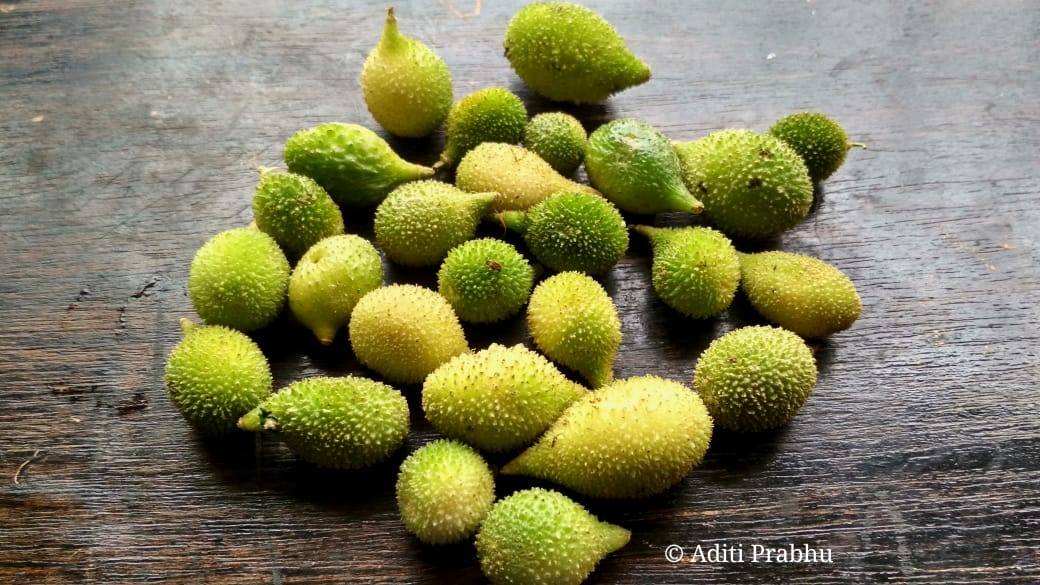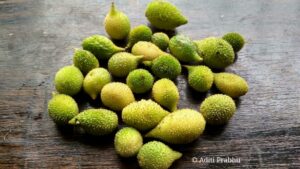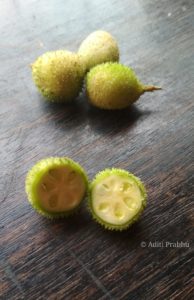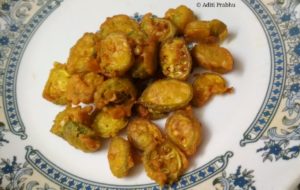Kantola / spine gourd, the small spiny vegetable is one of the lesser-known members of the gourd family which is available for a very short duration throughout the year.
Scientific Name:
Momordica dioica
0ther names:
Teasel gourd (English), Karkotaki (Sanskrit), Kantholi/Kartoli (Marathi), Kantola (Hindi), Bara karela ( Rajasthani, Bhat Korola/ kakrol (Bengali)
Appearance, texture, and taste.
Kantola / Spine gourd comes from the gourd family. It looks like a mini bitter gourd but isn’t bitter.
It comes in 2 sizes- larger golf bowl size ones and small ones which were about the size of a lemon i.e. around 2-4 cm in length. Each of these has a slightly different taste profile. The smaller ones happen to be more flavourful than the larger ones.
They have a spiny surface. The colour is usually green, shades change to greenish yellow or yellow as it ripens. It has a distinct taste of its own.
Availability:
Kantoli/Spine gourd though not a native of India is grown in many different parts of India. It is mainly available during the late summer to monsoons.
Purchasing and storing:
Preferably buy green but even the greenish-yellow ones can be used.
They can easily be stored in the fridge for over a week.
How to clean a Kantola?
- Wash the surface clean.
- Remove the stem.
- Cut into slices, pieces, or rings.
Nutrition facts:
Kantolas have carbohydrates, proteins, fat, fibre, and nutrients like vitamin C, some B vitamins, phytonutrients, flavonoids, and antioxidants.
They also are low in calories, and great for the gut and overall health. They also improve vision and help regulate blood sugars
Culinary Uses:
Though there are many dishes one can make using Kantola. Some of the dishes known to me include:
- Pakodas
- Stuffed spine gourd
- Gravy
- Dry vegetable.
Also, read about the other lesser-known vegetables which are locally grown on the blog – Phodshi, Takla, Ramkand, Dragon Stalk yam, and Carambola.
References:
- http://www.kiran.nic.in/pdf/Agri-Kaleidoscope/Horticulture-resources/SPINE%20GOURD.pdf
- https://www.ishs.org/ishs-article/752_82
- https://www.researchgate.net/publication/282438692_Spine_gourd_Momordica_dioica_An_underutilized_vegetable_with_high_nutritional_and_medicinal_values
- http://www.ijpab.com/form/2017%20Volume%205,%20issue%204/IJPAB-2017-5-4-1440-1443.pdf




Thank You for your information.
Im from chennai. Wher can i get this from ?
Though the season for this vegetable is almost at an end.
You can try the local vegetable market or any pazhamudir shop for the same.